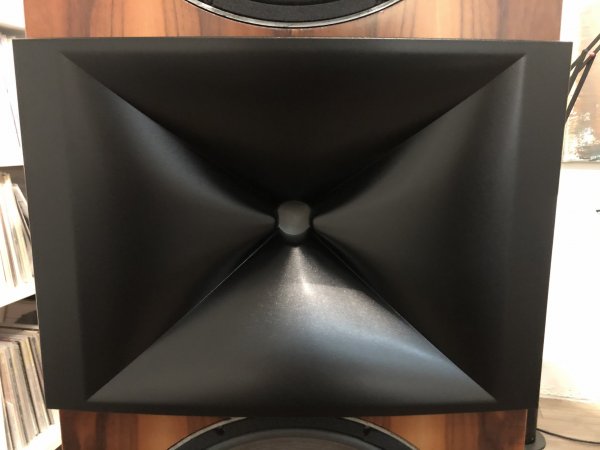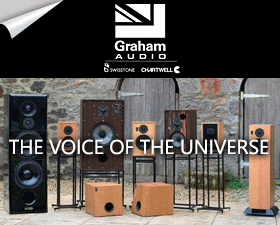Horns seem like such a tiny market, at least in North America. What innovations have there been for these types of speakers in the last 20 years, if any?
What are the sonic differences?
I think there was a worthwhile improvement that showed up about fifteen years ago.
Let me try to give a little background first... I'm not a loudspeaker historian so there may be some holes in my story...
In 1966 Altec introduced the Valencia, which combined a 15" woofer with a big horn, 90 degrees horizontal by 40 degrees vertical, crossed over at 800 Hz.
In 1977 Altec replaced the Valencia with the Model 19, same woofer and same horn, but with the crossover frequency raised to 1200 Hz. This went against the conventional wisdom of the day, and probably goes against the conventional wisdom of this day as well.
The purpose of the higher crossover frequency was pattern matching; that is, the crossover between woofer and horn occurred where the the woofer's radiation pattern had narrowed to approximately match that of the horn. The Altec horn was a diffraction horn with constant directivity in the horizontal plane but the pattern narrowed with increasing frequency in the vertical plane. The advantage of pattern matching is, there is no audible discontinuity through the crossover region, so coherence is improved.
A few years later JBL got into the pattern-matching business with their landmark Model 4430 studio monitor. The 4430 used a new bi-radial horn which covered 100 degrees constant directivity in both the horizontal and vertical planes, crossed over to a 15" woofer where their patterns matched in both planes (about 1 kHz). The advantage of constant directivity is, the reflections sound like the direct sound, which is desirable. But there was a downside to the Altec and JBL horns: They used diffraction to get adequate high frequency coverage, and diffraction in a horn tends to be a source of coloration, particularly at high sound pressure levels.
The next significant evolution in this area came about fourteen years ago, when Earl Geddes introduced his Summa, which combined a 15" woofer with a 90-degree pattern oblate spheroid round waveguide. The oblate spheroid profile is mathematically the optimum for minimizing disturbance of the wavefront (diffraction) while still allowing constant directivity out to about 90 degrees. The crossover point was of course where the patterns matched.
Earl was the first to use the term "acoustic waveguide" for a particular type of horn, because the emphasis was on pattern control rather than acoustic amplification, though arguably the bi-radial in the 4430 had the same emphasis.
Just about everything in audio involves tradeoffs, and the oblate spheroid is no exception. You see, the limiting factor in on-axis efficiency for a compression driver is usually the top end. And a constant-directivity device like the oblate spheroid allows that top end energy to be spread over a wide area, in this case 90 degrees in both planes. In contrast an exponential or tractrix or spherical horn has a much narrower pattern up high, and then the pattern widens as we go down in frequency. So with those types, the highs are concentrated into a much narrower angle, resulting in higher pressure levels - higher sound pressure levels - on-axis. A compression driver that can hit 110 dB out to 20 kHz on-axis with one of these horn types would probably struggle to approach 100 dB at 20 kHz on-axis on a 90-degree oblate spheroid. The same amount of sound comes out either way; it's just concentrated into a tighter pattern by those other horn types.
Also, the crossover topology is more complex for a constant-directivity horn. Equalization is required; the lower end of a constant-directivity horn/driver combination is inherently louder than the top end, because down low where the compression driver's pattern would be very wide without a horn, all of that output is being funneled into the same angle as the top end.
I happen to think these tradeoffs are worth the benefits of constant directivity, because I think the tonal balance of the reverberant sound should reflect that of the direct sound (bad pun intended). So my nomination for an "improvement in horn speakers in the last 20 years" would be the Oblate Spheroid waveguide.


















